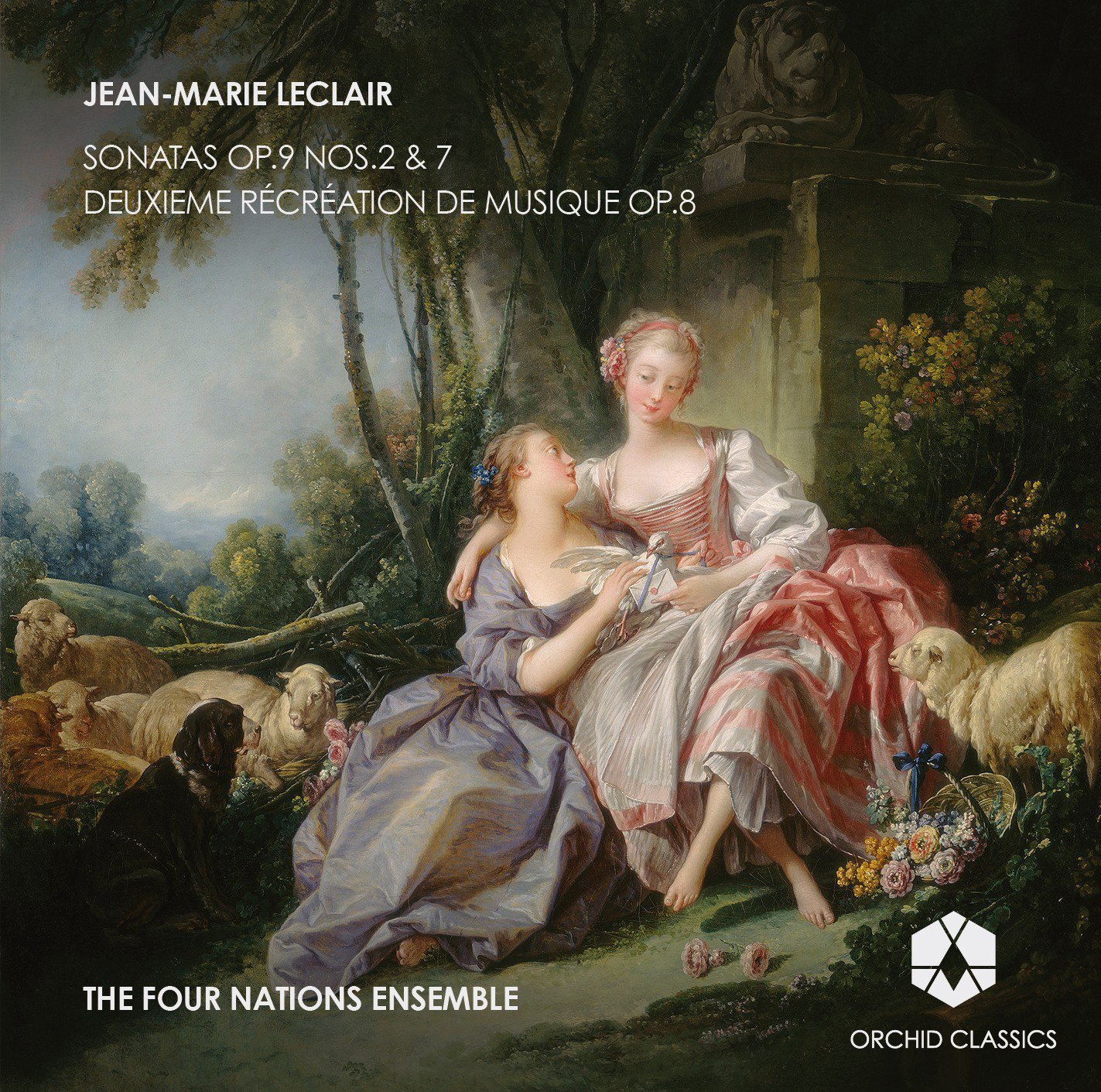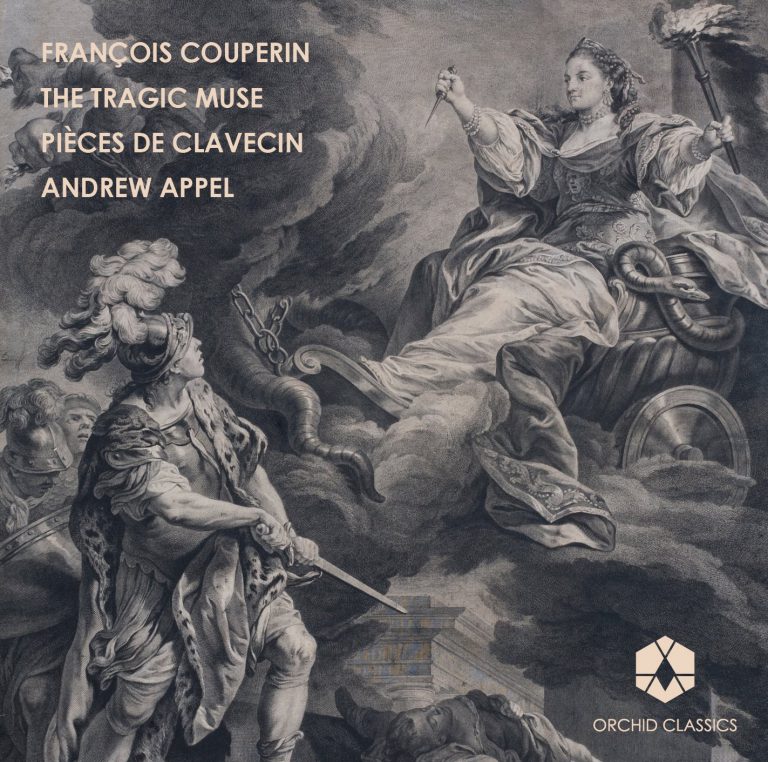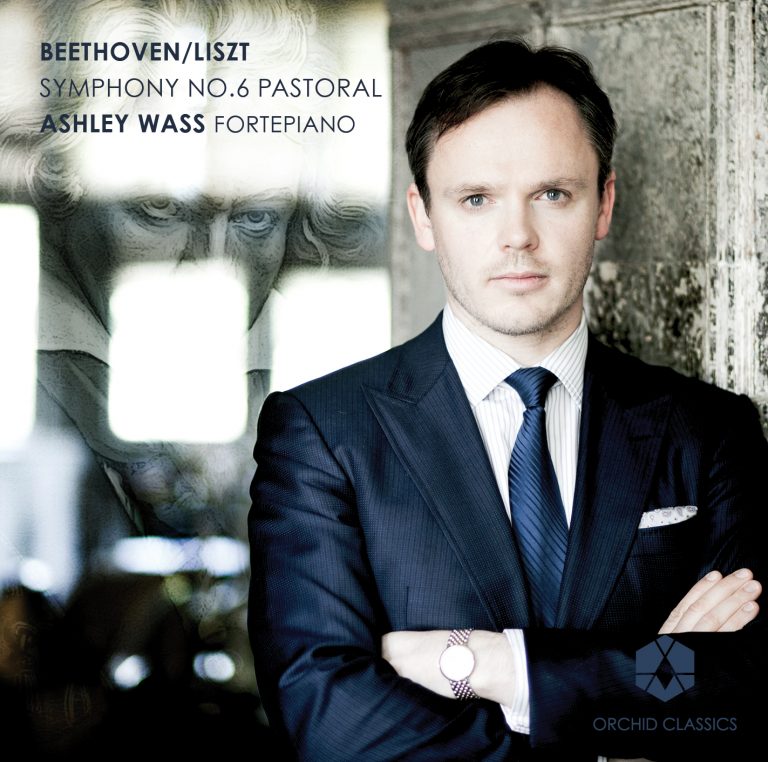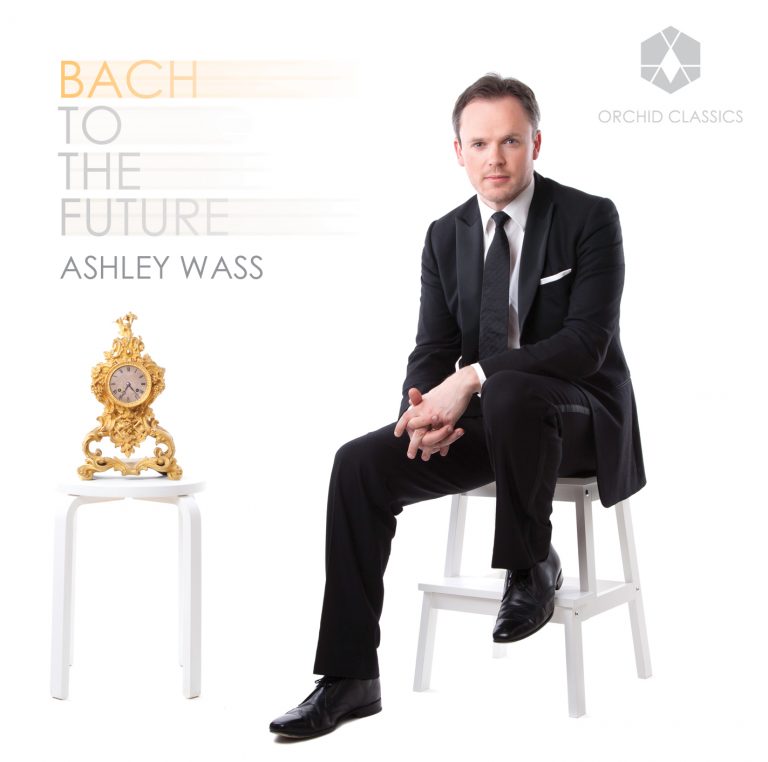Artist Led, Creatively Driven

Jean-Marie Leclair Sonatas
Four Nations Ensemble
Release Date: July 2013
ORC100032
JEAN-MARIE LECLAIR (1697-1764)
Sonata in E minor, Op.9 No.2 (1743) qui peut se jouer sur la Flute Allemande
Dolce: Andante
Allemanda Allegro ma non tropo
Sarabanda: Adagio
Minuetto: Allegro non tropo
Deuxieme Récréation de Musique Op.8 (1737)
Ouverture: Gravement-Legerement
Forlane: pas trop vite
Sarabanda: Lentement
Menuet
Badinage
Chaconne
Tambourin
Sonata in G major, Op.9 No.7 (1743) qui peut se jouer sur la Flute Allemande
Dolce: Andante
Allegro ma non tropo
Aria Affettuoso et Altro
Giga: Allegro moderato
The Four Nations Ensemble
Charles Brink, traverso
Krista Bennion Feeney, violin
Loretta O’Sullivan, cello
Andrew Appel, harpsichord and director
Jean-Marie Leclair – Seduction and Rococo art
In Pierre Choderlos de Laclos’ masterful and emblematic 18th-century epistolary novel Les Liaisons Dangereuses, the Marquise de Merteuil tickles, delights and at the same time emasculates both her sparring partner Valmont and the reader with artful, witty virtuosity. A razor-sharp, humorous image here, a play on words there, a slightly confounded expectation, an erotic allusion, a badinage beckons us. We lean forward to better hear each salacious detail. The Marquise compliments our intelligence even as she robs the dignity of others and threatens our humanity. She stokes a fever of egocentric entitlement in our hearts. She makes us ill while making us laugh. These are the dangers of her courtly sophistication. This is the unexpected toxin of Rococo art.
Today, our assessment of Rococo art, whether musical or visual, is a faulty one. Thinking it benign, and prettified, even insipid, we recognize the agreeable but overlook the seductive. Do we not run the danger of allowing the basic tenets of our existence to drift permanently from sight as filigree obscures virtue? So the 18th-century French philosopher Denis Diderot warned us when he wrote that the great Rococo artist François Boucher might be the greatest painter of the time—but he was also the most dishonest.
Son élégance, sa mignardise, sa galanterie romanesque, sa coquetterie, son goût, sa facilité, sa variété, son éclat, ses carnations fardées, sa débauche, doivent captiver les petits-maîtres, les petites femmes, les jeunes gens, les gens du monde, la foule de ceux qui sont étrangers au vrai goût, à la vérité, aux idées justes, à la sévérité de l’art ; comment résisteraient-ils au saillant, au libertinage, à l’éclat, aux pompons, aux tétons, aux fesses, à l’épigramme de Boucher?
(His elegance, cuteness, Romanesque gallantry, coquettishness, taste, facility, variety, virtuosity, imaginary complexions, debauchery, must captivate the little masters, little women, young people, stylish people, and the mass of those who are strangers to true taste, to the truth, to real ideas, to the severity of art; how will they resist the salacious, the libertine, the glitter, the pompons, the nipples, the buttocks, the epigram of Boucher?)
Diderot on Boucher (Salon de 1761)
Both Diderot and Laclos responded to Rococo art as if it were the great hazard of their times.
In this context, consider, then, the elaborated melodies of 18th-century violinist and composer Jean-Marie Leclair. A dictionary of Rococo elegance, they provide an aural manifestation of the fabrics he knew as the young son of a lace-maker. Leclair’s decorated melodies supply an opportunity for the violinist or flautist to entice and seduce his audience. When well performed, his ornaments conjure up sighs and giggles, pinches and feathers, tears of melancholy and moans of pleasure. And Leclair, dedicating these works to “people of good taste,” expects that the energy and tempo of each ornament will be varied to enliven an expressive intention. He is as demanding of refined interpretation as is his harpsichordist colleague François Couperin. Leclair’s musical narrative offers an exquisite balance of instrumental virtuosity and sensitive rhetoric.
Yet this elegance is but one quality among many that sets Leclair apart as possibly the greatest French violin composer. His fiddle is the dance master’s tool, bringing to life the court minuet and gavotte, as well as the barn dance performed by wooden-shoed peasants and a tambourin. Like his contemporary JeanPhilippe Rameau, Leclair’s chaconne from his Second Récréation de Musique brings us the variety, sensuality and luxury of the grand ballet at the Royal Opera. His great fugues are never turgid, his innocent dance tunes never trite.
We offer this selection of sonatas and the Récréation as a tribute to Leclair as we commemorate the 250th anniversary of his death. At the age of 67, he was murdered in front of the house he had purchased in a dangerous neighbourhood of Paris. There is no question that the world admired Leclair but there is little evidence that they loved him. His prefaces present a slightly misanthropic face. He was unable to share power at court with colleagues and left. His marriage to Louise Roussel, one of France’s finest music engravers, ended in rupture, and evidence suggests that he was murdered at the hand of a disgruntled nephew. But today, two and a half centuries setting us at a safe distance from difficult aspects of his personality, Leclair, like the Marquise de Merteuil, is a most attractive and tempting dance partner or serenade singer. And so, ignore Diderot’s warnings. Ignore the déuge that Louis XV knew was at hand. On with seduction!
© Andrew Appel
FOUR NATIONS ENSEMBLE
Founded in 1986, The Four Nations Ensemble brings together soloists who are leading exponents of period instrument and vocal performance to present music from the Renaissance through the Viennese Classical works of Haydn, Mozart and Beethoven. For three decades, Four Nations has developed a leading presence on the early music scene in New York and across the USA. With a core ensemble of harpsichord or fortepiano, violin(s), flute and cello, the Ensemble explores and performs masterpieces of the 17th and 18th centuries, from trio sonata to piano trio and quartet. Four Nations has performed at major houses and series throughout the United States including The Kennedy Center and Lincoln Center. The Ensemble has participated in festivals including The Boston Early Music Festival, New York’s Mostly Mozart, Amherst Festival, New Haven’s International Festival of Arts & Ideas, Skaneateles Chamber Music Festival, Virginia Waterfront International Arts Festival, Chautauqua, The Indiana Early Music 4 Festival, The Redwoods Festival in Santa Rosa, California, and Brasilseguridade in Rio de Janeiro.
As Four Nations distinguishes itself with imaginative and innovative programming, it is not unusual for the Ensemble to unite the music of Purcell and Schönberg, Haydn with French Canadian and Cajun fiddling, François Couperin and Chinese Court Music. Such adventurous programming has led to invitations to perform at The Kennedy Center’s Terrace Theater and in New York’s WQXR’s June Festival of Quartets at Lincoln Center and serve as the resident chamber music ensemble at New Haven’s International Festival of Arts & Ideas. Four Nations appeared on the Great Performers Series in Lincoln Center’s inaugural season of chamber music concerts at the Walter Reade Theater. The Ensemble’s extraordinary programming was spotlighted by Chamber Music America at the 1996 CMA conference where Andrew Appel was asked to lead a seminar demonstrating the possibilities in the imaginative juxtaposition of music from very different cultures.
Considered leading exponents of original instruments, The Four Nations Ensemble often appears on “collection” and “historical music society” series such as those at the Smithsonian and the Midwest Historical Keyboard Society. The Ensemble’s performance at the Yale University Collection of Musical Instruments included music by Couperin, Rameau, Debussy and Duparc on the collections’ great instruments. In recognition of its dedication to unusual repertoire, Four Nations has also served as Ensemble-inResidence at the New York Public Library’s Special Collections at Lincoln Center. Four Nations’ arts-in-education programmes highlight the Ensemble’s commitment to bringing the joy of chamber music to diverse audiences of all ages. Noteworthy, the Ensemble’s public school programme, allows Four Nations a week-long residency, particularly in under-served communities, with elementary or middle school children to integrate the arts into the regular curriculum. With its origins in public schools in Brooklyn and the Bronx, Noteworthy has allowed Four Nations to work with children in communities throughout the USA including Hudson and Woodstock, New York; Minnesota; Colorado and Texas. In 1997 Four Nations received the Columbia County Council on the Arts’ Arts-in-Education Recognition Award for its work with the Hudson City School District. Featured in Musical America’s 1997 International Directory and Early Music America magazine’s “Early Music in the Classroom” (Fall 1998), Noteworthy has become a prototype for similar programmes around the USA and continues to attract support from private foundations and municipal funds in New York. In the 1998-99 academic year, Four Nations served as the Classical Music Ensemble for Lincoln Center Institute’s Arts-in-Education Repertory.
In 1999, director Andrew Appel was asked to consult with the Amarillo Symphony in creating a long- term programme between the Orchestra and the Amarillo school system. Here, he worked with members of the Symphony, developing skills in communication both with teachers and students. In 1999-2000, the Ensemble held a multi-faceted residency with the Jacksonville Symphony. Along with education work in the schools, Four Nations worked with the Symphony, bringing recent ideas of early music style and performance to the musicians. Concerts included both orchestral works and chamber music.
The Ensemble has also developed special relationships with colleges and universities throughout the country giving professional workshops in performance practice and lecture demonstrations connecting classical music to the larger arena of humanities studies. Beginning with a prestigious Residency Grant from Chamber Music America, Four Nations Guest Artist Residency with King’s College in Wilkes-Barre, Pennsylvania flourished into a special and unique relationship with King’s College and surrounding communities. Four Nations received new support from Chamber Music America Ensemble Residency Grant for its work with Gettysburg College to further its work with the students, faculty and the surrounding community and most recently for work with the Spencertown Academy and the Chatham Central School System in New York State.
Four Nations has received funding from the National Endowment for the Arts, New York State Council for the Arts (NYSCA), New York City’s Department for Youth Services and Department of Cultural Affairs. In 1998, the Ensemble received a challenge grant from NYSCA for “institutional stabilization” which has allowed Four Nations to continue its growth and increase its performance and recording activities with an administrator. For its Handel & Venice and Haydn in London touring programmes, The Four Nations Ensemble was a participant in Chamber Music America’s Music Performance Program funded by the National Endowment for the Arts, The Andrew W. Mellon Foundation and The William and Flora Hewlett Foundation.
The Four Nations Ensemble can be heard on ASV/Gaudeamus with which the complete trios of Johann Schobert have been released. Soprano Christine Brandes joined the Ensemble for Handel & Porpora: The Rivals, initiating Four Nations’ “Handel Compar’d” Project. Countertenor Matthew White joined Four Nations for the second Handel Compar’d recording Handel & Vivaldi. Haydn: The Battle of the Nile and Sonatas and Cantatas of Antonio Caldara are Four Nations’ last releases with ASV/Gaudeamus. This year Andrew Appel has begun a project to record Francois Couperin’s harpsichord works along with this recording of Leclair’s sonatas and an upcoming recording of Francesco Geminiani’s opus 5 cello sonatas on Orchid Classics.
“The ensemble give a polished, affectionate reading of Leclair’s Op.8 Recreation.”
(Julie Anne Sadie, Gramophone Magazine, September 2013)
“The whole suite is played with great relish by the ensemble with a good balance between the instruments.”
(David Hansell, Early Music Review, August 2013)
“… Charles Brink’s transverse flute playing, melding flexible agility with a gorgeous range of colours… It’s not easy making a flute sound this expressive.”
(Graham Rickson, The Arts Desk, July 2013)
“O’Sullivan and Appel respond with micro-second sensitivity to Brink’s gestures. The results are lovely.”
(Tom Moore, Early Music America, December 2013)










